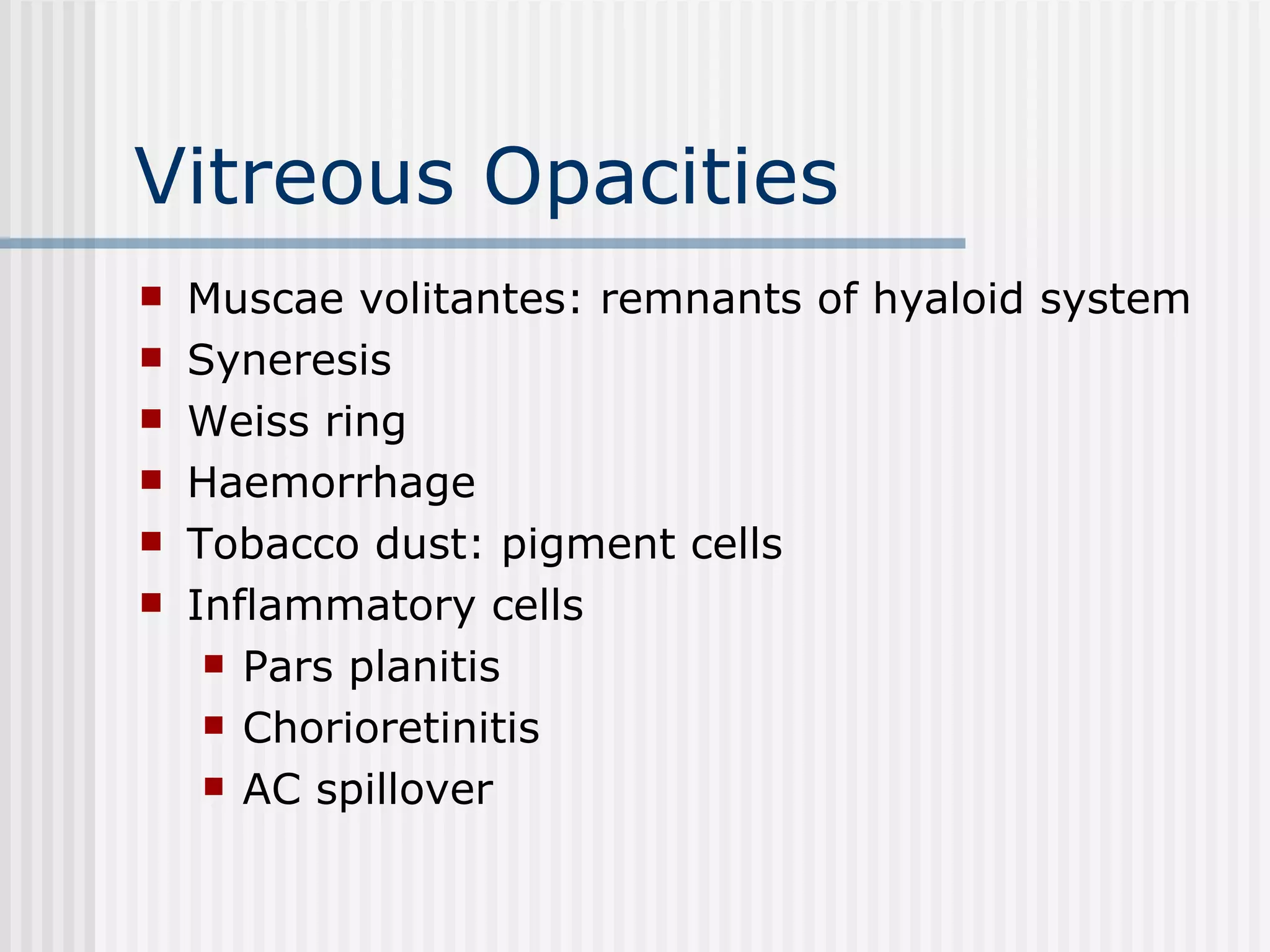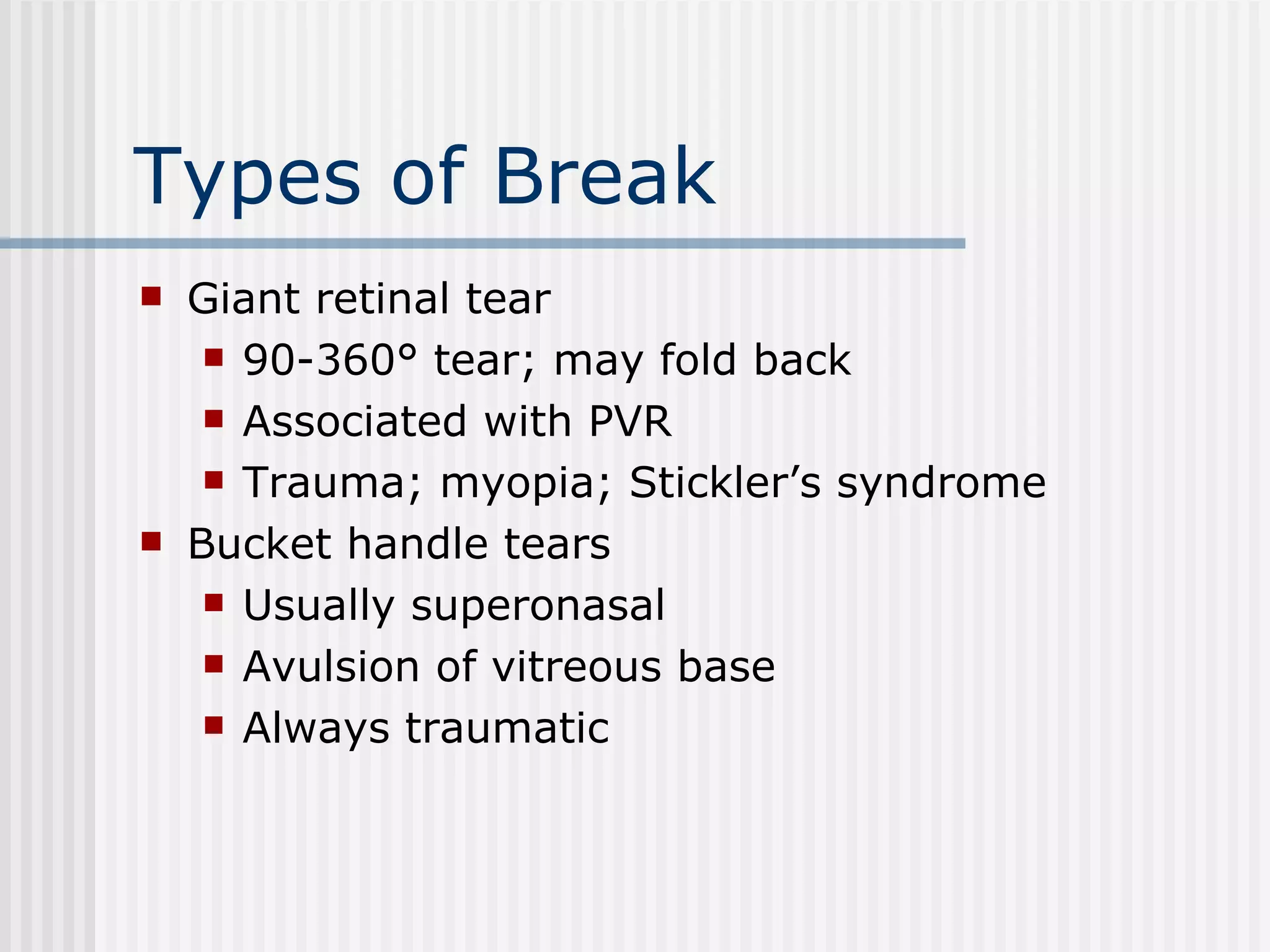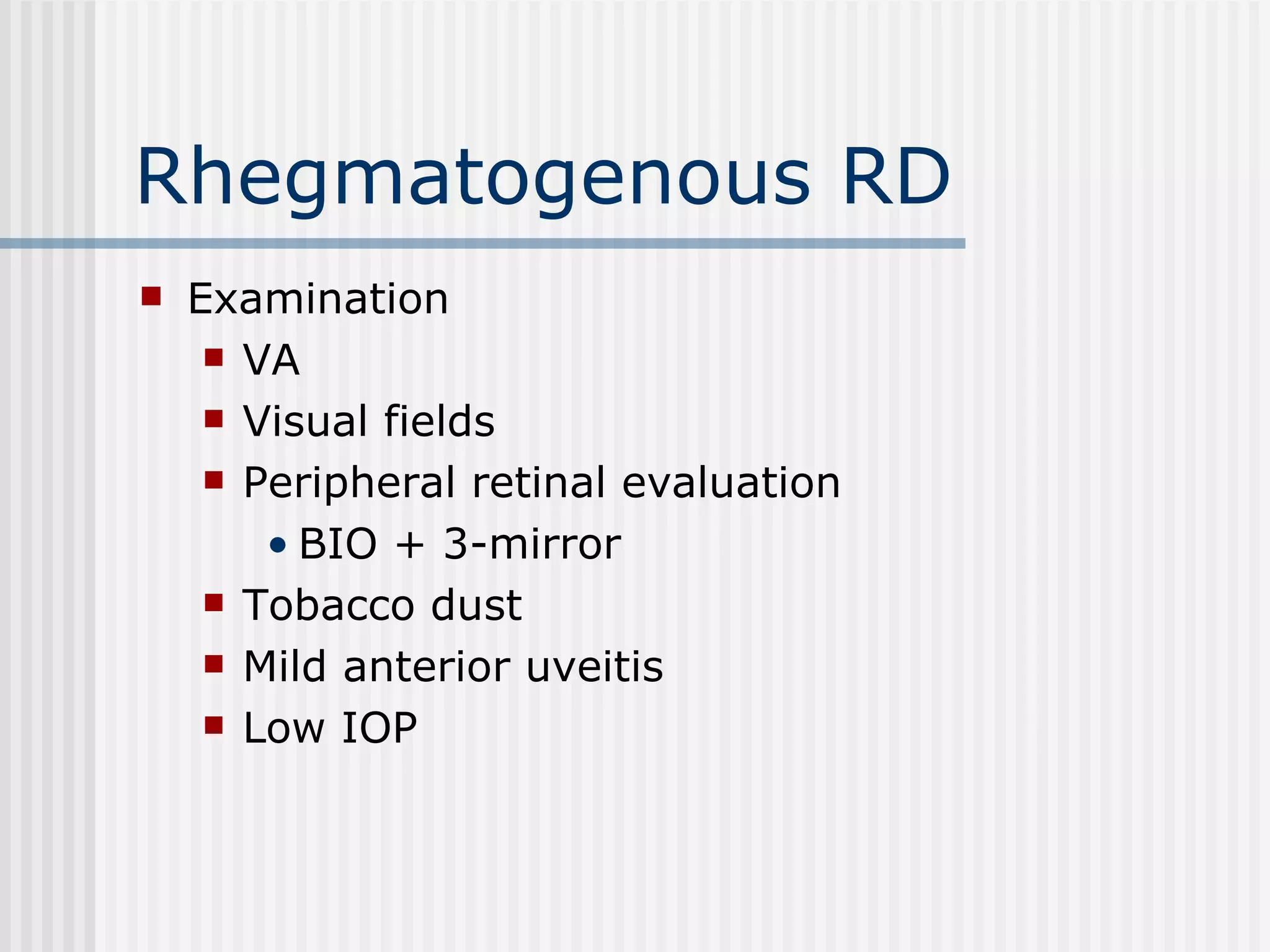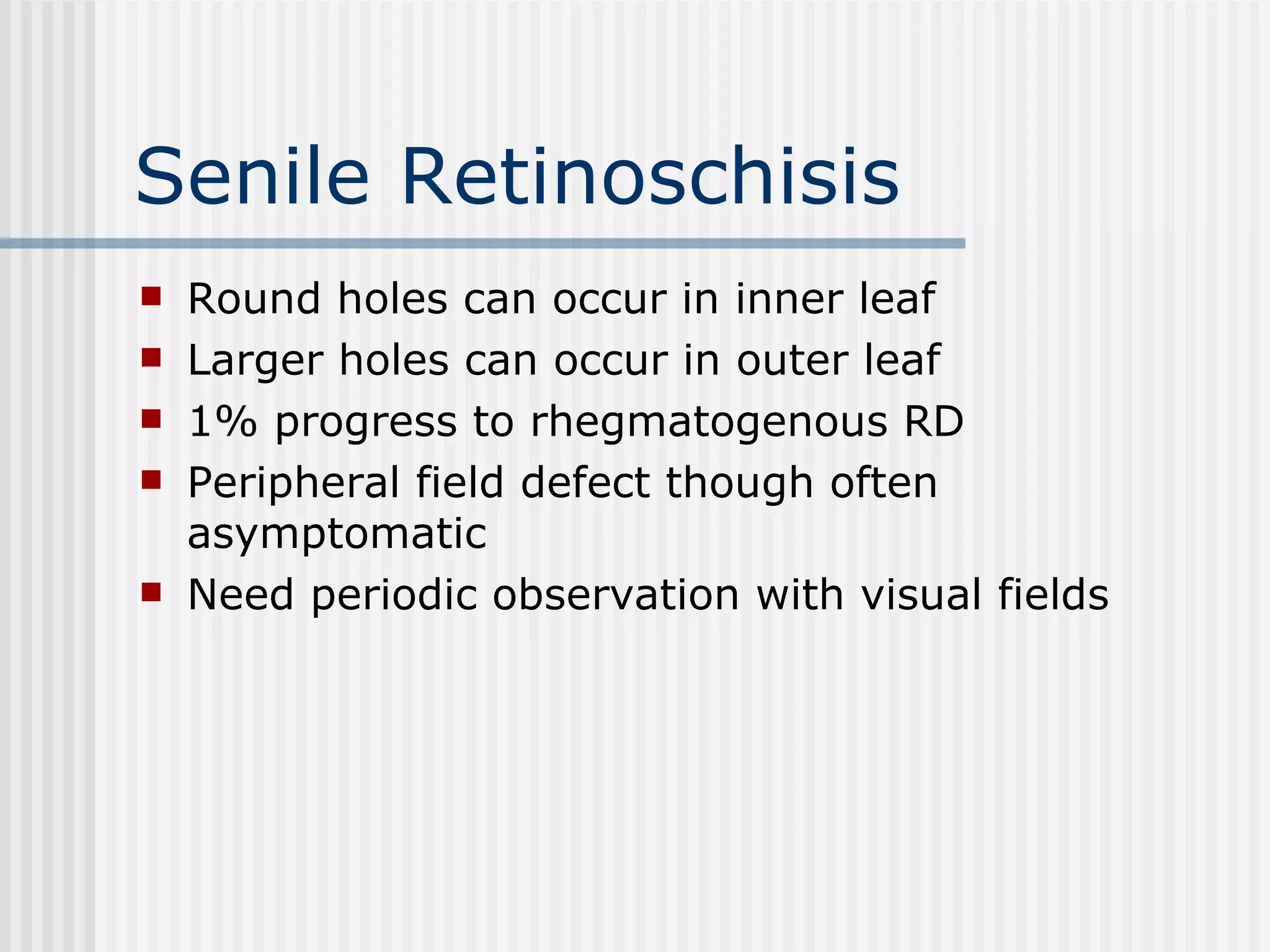This document discusses disorders of the vitreous and retinal detachment. It provides details on the structure and aging of the vitreous, conditions that can lead to vitreous opacities and detachment, types of retinal detachments including rhegmatogenous retinal detachment and its causes and treatment, complications of retinal detachment surgery, and vitreoretinal degenerations that predispose the retina to detachment.




![Vitreous Aging changes Dissociation of hyaluronate from fibrils Pooling of hyaluronate Fibril degeneration & elasticity Drainage of hyaluronate into retrovitreal space ( posterior vitreous detachment [PVD])](https://image.slidesharecdn.com/hpptfilesbradfordresourcesoculardiseaselecture07-090317003235-phpapp01/75/VASCULAR-AND-HEREDITARY-RETINAL-DISEASE-5-2048.jpg)























![Rhegmatogenous RD Principles of treatment Localisation & closure of breaks Relief of vitreoretinal traction Buckling or vitrectomy Neuroretinal-rpe adhesion Photocoagulation or cryotherapy Internal tamponade Air; longer acting gases [SF 6 , C 3 F 8 ]; Silicone oil](https://image.slidesharecdn.com/hpptfilesbradfordresourcesoculardiseaselecture07-090317003235-phpapp01/75/VASCULAR-AND-HEREDITARY-RETINAL-DISEASE-29-2048.jpg)




























